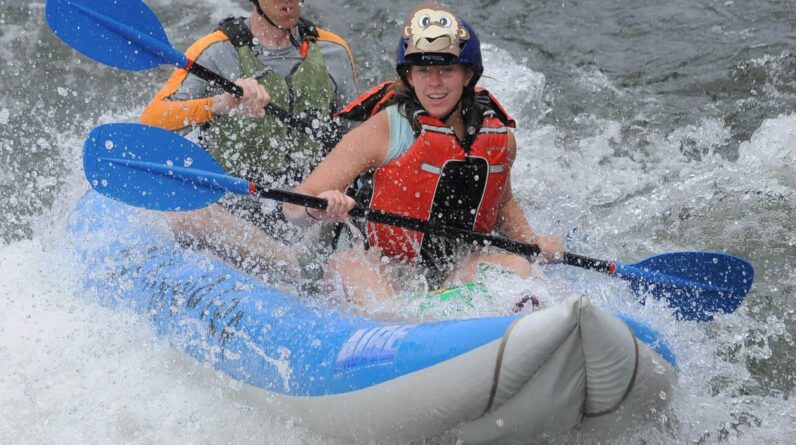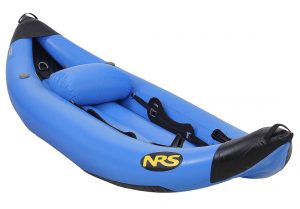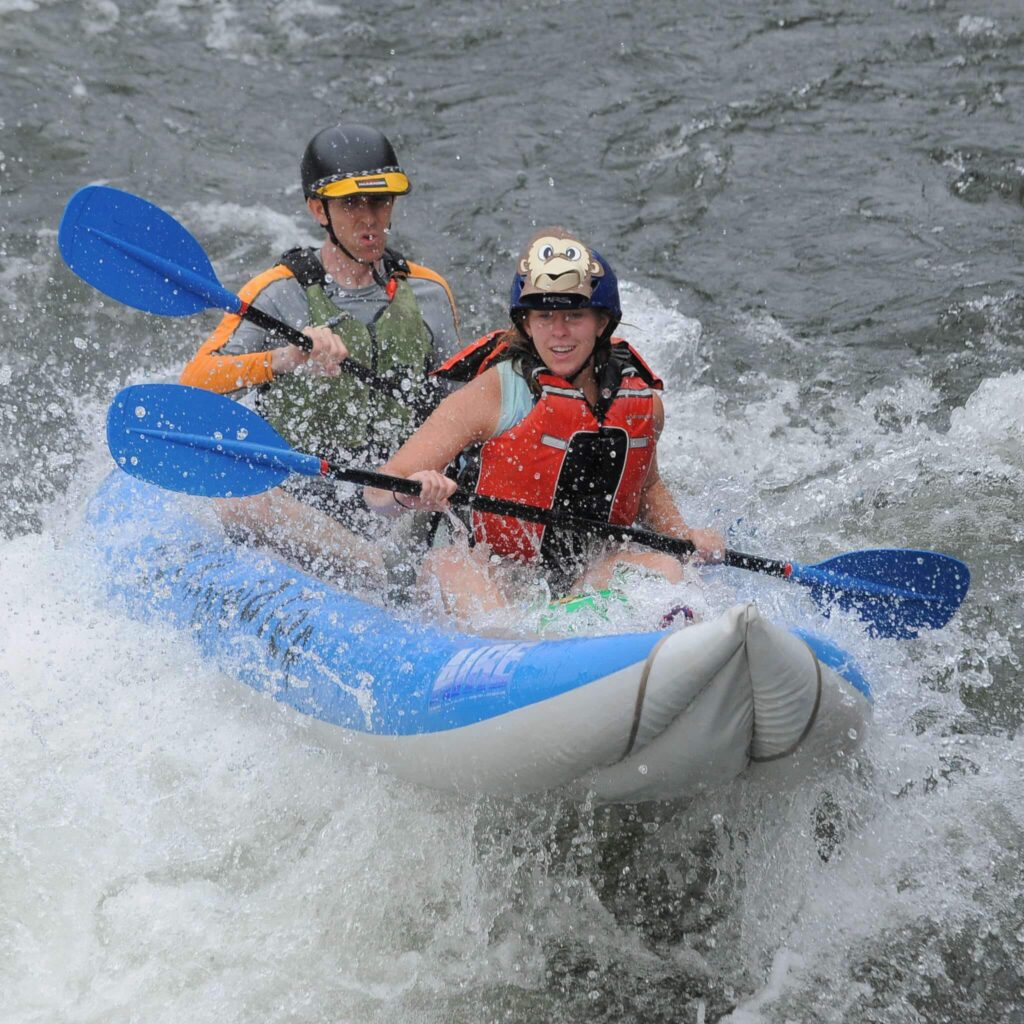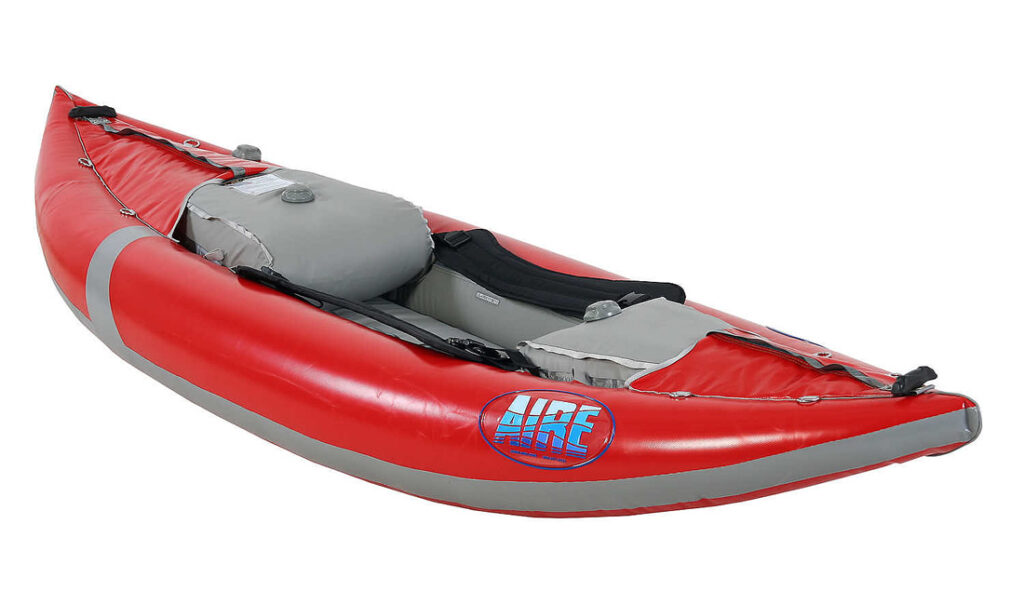
Are you ready to take your kayaking skills to the next level? Have you ever considered trying out an inflatable whitewater kayak? These versatile and sturdy kayaks are perfect for navigating the thrilling rapids of whitewater rivers. In this article, we’ll discuss the benefits of inflatable whitewater kayaks and why they are becoming increasingly popular among outdoor enthusiasts. Whether you’re an experienced kayaker or just starting out, this is definitely something you don’t want to miss!
When it comes to conquering whitewater rapids, safety is always a top priority. Inflatable whitewater kayaks offer a unique advantage in this regard. Made from robust and durable materials, these kayaks are designed to withstand the toughest conditions. Their inflatable nature also provides additional stability and buoyancy, making them more forgiving in rough waters. This means that even if you’re not an expert kayaker, you can still enjoy the adrenaline rush of navigating challenging rapids without compromising your safety. In our next article, we’ll delve deeper into the various features and types of inflatable whitewater kayaks, helping you choose the perfect one for your next adventure. Stay tuned!
Inflatable Whitewater Kayaks
Are you an adrenaline junkie who loves the thrill of navigating through rapids? If so, then inflatable whitewater kayaking is an exciting sport that you should definitely try. Inflatable whitewater kayaks, also known as IKs, are specially designed kayaks that are perfect for tackling the challenges of fast-moving rivers and rapids. In this article, we will explore the benefits of inflatable whitewater kayaks, the construction and materials used in their manufacturing, as well as essential gear, techniques, and safety measures for this thrilling adventure sport.
Benefits of Inflatable Whitewater Kayaks
One of the biggest advantages of inflatable whitewater kayaks is their portability. Unlike traditional hard-shell kayaks, inflatable kayaks can be easily deflated and rolled up, making them extremely compact and lightweight. This means that you can easily transport your kayak to different river locations or even take it on camping trips without the need for a roof rack or trailer.
Inflatable kayaks are also incredibly durable. They are made from high-quality materials such as PVC or Hypalon, which are puncture-resistant and can withstand the rigors of whitewater kayaking. This makes them the perfect choice for navigating through rocky rivers or shallow sections where hard-shell kayaks might get damaged.
Additionally, inflatable kayaks provide excellent stability on the water. They have multiple air chambers that offer superior buoyancy, making them much more stable than traditional kayaks. This stability gives you better control over your kayak and allows you to tackle challenging rapids with confidence.
Construction and Materials used in Inflatable Kayaks
Inflatable whitewater kayaks are designed to withstand the intense forces of fast-moving water. They are constructed using durable and high-performance materials that ensure their longevity and reliability.
The outer shell of an inflatable kayak is typically made from PVC or Hypalon, which are both strong and resistant to abrasion. These materials provide protection against rocks, debris, and other hazards that you may encounter while paddling in whitewater.
The inner chambers of inflatable kayaks are usually made from heavy-duty PVC or urethane-coated fabric. These materials are incredibly airtight, ensuring that your kayak remains inflated while navigating through rapids. The multiple air chambers in the kayak also provide redundancy, which means that even if one chamber gets punctured, the other chambers will keep the kayak afloat.
The seams of inflatable kayaks are carefully welded or glued to ensure maximum strength and durability. Some kayaks also have reinforced areas on the bottom or sides to provide additional protection against wear and tear.
Choosing the Right Inflatable Whitewater Kayak
When it comes to choosing the right inflatable whitewater kayak, there are several factors that you need to consider, including your skill level, weight capacity, sizing, stability, and maneuverability.
Considerations for Skill Level
If you are just starting out in whitewater kayaking, it’s important to choose a kayak that matches your skill level. Beginner-friendly kayaks are designed to be stable and easy to maneuver, making them ideal for learning the ropes. As you gain more experience and confidence, you can upgrade to more advanced kayaks that offer higher performance and greater maneuverability.
Weight Capacity and Sizing
Another important consideration when choosing an inflatable whitewater kayak is ensuring that it has enough weight capacity to carry both you and your gear. Make sure to check the manufacturer’s specifications to determine the maximum weight limit of the kayak.
Additionally, it’s crucial to choose a kayak that is the right size for your body. Kayaks that are too big or too small can affect your ability to control the kayak and navigate through rapids effectively. It’s recommended to sit in the kayak and test it out before making a final decision.
Stability and Maneuverability
The stability and maneuverability of an inflatable whitewater kayak play a significant role in determining how well it performs in fast-moving water. A stable kayak will provide you with the confidence to tackle challenging rapids, while good maneuverability will allow you to navigate through tight spots and avoid obstacles.
When choosing a kayak, look for features such as a flat or moderately rockered bottom, which enhance stability and maneuverability. Additionally, kayaks with pronounced chines or edges provide better tracking and responsiveness, allowing you to make precise turns and maneuvers.

Essential Gear and Equipment for Whitewater Kayaking
Now that you have chosen the right inflatable whitewater kayak, it’s time to gather the essential gear and equipment for your adventure. Proper gear not only ensures your safety but also enhances your performance on the water.
Paddle Selection and Technique
Your paddle is your primary tool for propelling and maneuvering your kayak in whitewater. It’s important to choose a paddle that is appropriate for your height, paddling style, and the type of whitewater you will be kayaking in. Generally, shorter paddles are better suited for maneuverability, while longer paddles are more efficient for longer-distance paddling.
In terms of technique, learning proper paddle strokes and bracing techniques is essential for maintaining balance and maneuvering through rapids effectively. Taking lessons or practicing with experienced paddlers can greatly improve your paddle technique and enhance your kayaking skills.
Proper Safety Gear
Safety should always be a top priority when engaging in whitewater kayaking. Wearing the right safety gear can protect you from potential injuries and keep you safe in challenging conditions.
A helmet is an absolute must when kayaking in whitewater. It protects your head from rocks and other hazards that you may encounter in fast-moving water. Look for a helmet specifically designed for whitewater kayaking, with a secure fit and sufficient padding.
A personal flotation device (PFD) or life jacket is another essential piece of safety gear. It keeps you afloat in the water and provides buoyancy, even in turbulent rapids. Make sure to choose a PFD that is approved by relevant safety standards and fits you properly.
Helmet and Personal Flotation Device
In addition to a helmet and PFD, there are several other safety gear items that you should consider when whitewater kayaking. These include a throw bag, which can be used to rescue other paddlers or yourself in case of an emergency, and a whistle to attract attention.
It’s also a good idea to carry a first aid kit with essential supplies such as bandages, antiseptics, and pain relievers. Additionally, consider investing in a waterproof dry bag or dry box to protect your valuables and essential items from water damage.
Preparation and Safety Measures
Whitewater kayaking involves inherent risks, and it’s important to be well-prepared and take necessary safety measures before hitting the water. Here are some key steps to ensure your safety and make your whitewater kayaking experience enjoyable.
Understanding Whitewater Classifications
Whitewater rivers are classified based on their difficulty and the level of skill required to navigate them. Understanding these classifications can help you assess whether a particular river is suitable for your skill level and experience.
The International Scale of River Difficulty is commonly used to classify whitewater rivers, ranging from Class I (easy) to Class VI (extremely difficult or impossible). Class I rivers have small rapids and gentle currents, while Class VI rivers are considered unrunnable due to their dangerous and extreme conditions.
Before embarking on a whitewater kayaking trip, carefully research and choose rivers that match your current skill level. It’s always recommended to start with easier rivers and gradually progress to more challenging ones as your skills and confidence improve.
Pre-trip Planning and Research
Proper pre-trip planning and research are essential for a safe and successful whitewater kayaking adventure. Gather information about the river you will be kayaking on, including its flow rate, weather conditions, and potential hazards. Understand the access points and take note of any emergency exit points along the route.
It’s also important to check the water levels and weather forecasts before heading out. High water levels can significantly impact the difficulty and risks of kayaking, while unfavorable weather conditions such as heavy rain or thunderstorms can create dangerous situations.
Packing Essential Supplies
Packing the right supplies is crucial for a comfortable and safe whitewater kayaking experience. Apart from your kayak and gear, make sure to bring plenty of drinking water to stay hydrated throughout your trip. Carrying high-energy snacks or quick meals can provide you with the necessary fuel during long kayaking sessions.
Additionally, pack appropriate clothing for the weather conditions. Have a dry change of clothes in a waterproof bag or dry box to ensure comfort after your kayaking session. It’s also wise to carry a spare paddle and repair kit in case of any equipment failures or damages.

Techniques for Whitewater Kayaking
Whitewater kayaking requires a specific set of techniques and skills to navigate safely and effectively through rapids. Here are some key techniques that you should master to enhance your whitewater kayaking experience.
Bracing and Rolling Techniques
Bracing is a fundamental technique in whitewater kayaking that helps you maintain balance and prevent capsizing. There are different types of braces, such as low brace and high brace, which are used in various situations to stabilize your kayak.
Rolling is another important skill that allows you to self-rescue and regain an upright position when you capsize. Learning how to roll takes practice and can be best learned through professional lessons or with experienced paddlers.
Reading and Navigating Rapids
Being able to read and understand the river’s features and currents is crucial for successful navigation through rapids. Look for indicators such as waves, eddies, and hydraulic features that can help you choose the best line and make precise maneuvers.
When navigating rapids, it’s important to plan your route in advance and anticipate any obstacles or hazards. Practice making quick and decisive turns using your paddle strokes to avoid rocks, strainers, or other dangerous features.
Dealing with Strainers and Rocks
Strainers are obstacles in the river, such as fallen trees or debris, that allow water to pass through but can trap objects or people. It is crucial to identify and avoid strainers, as they can be extremely dangerous in fast-moving water.
Rocks are another common feature in whitewater rivers and can cause collisions or capsizing if not navigated properly. Learning how to paddle around rocks and use eddies to your advantage can help you avoid hazardous situations and maintain control of your kayak.
Whitewater Kayaking Etiquette and Environmental Awareness
Whitewater kayaking is not only about enjoying the thrill of the sport but also about respecting the environment and fellow paddlers. Following proper etiquette and practicing environmental awareness is essential for the sustainability and preservation of our rivers and natural spaces.
Respecting Other Paddlers
When on the water, always give right of way to faster-moving or more experienced paddlers. Be mindful of others and avoid crowding or impeding their progress. Maintain a safe distance and communicate clearly with other kayakers to avoid collisions and conflicts.
It’s also important to be respectful of the local community and other river users. Observe any rules or regulations in place and be considerate of the noise and impact you may have on the surroundings.
Leave No Trace Principles
As a responsible whitewater kayaker, it’s important to follow the Leave No Trace principles to minimize your impact on the environment. Pack out all your trash and waste and dispose of it properly. Avoid disturbing wildlife and respect their habitats. Minimize the use of soap or cleaning agents in the river to protect the water quality and aquatic life.
Conservation and Preservation Efforts
Joining and supporting conservation organizations that work towards protecting and preserving our rivers and natural spaces is a great way to contribute to the sustainability of whitewater kayaking. Participate in clean-up efforts and volunteer for river restoration projects to give back to the environment and community.

Common Challenges and Troubleshooting
Whitewater kayaking can present several challenges, but with the right knowledge and skills, you can overcome them safely. Here are some common challenges that kayakers face and tips for troubleshooting.
Capsizing and Self-Rescue
Capsizing is an inevitable part of whitewater kayaking, but knowing how to self-rescue is crucial for your safety. Practice rolling techniques and self-rescue drills in calm water or under the guidance of a qualified instructor. In case of a capsize, stay calm and follow the appropriate rescue techniques to get back in your kayak.
Dealing with Hypothermia and Cold Water
Whitewater kayaking often involves paddling in cold water, especially during colder seasons or in glacial-fed rivers. Hypothermia is a real risk in such conditions, and it’s important to dress appropriately and be prepared for the cold. Wear a wetsuit or drysuit, which provide insulation and protect against heat loss. Carry extra layers and warm beverages to keep yourself comfortable during your kayaking adventure.
Recognizing and Avoiding Hazards
Whitewater rivers can present various hazards that kayakers need to be aware of and avoid. Strainers, rocks, undercuts, and strong currents are some of the common hazards that can pose serious risks. Take the time to familiarize yourself with the river and its features before you start paddling. Always prioritize safety and use your judgment to avoid potential dangers.
Exploring Whitewater Kayaking Destinations
Whitewater kayaking offers the opportunity to explore breathtaking rivers and gorges around the world. From iconic destinations to local whitewater parks, here are some popular spots that every whitewater kayaker should consider visiting.
Popular Whitewater Rivers and Gorges
The Pacuare River in Costa Rica, the Gauley River in West Virginia, and the Futaleufu River in Chile are just a few examples of famous whitewater rivers known for their stunning scenery and challenging rapids. These rivers attract paddlers from all over the world and offer unforgettable experiences.
International Whitewater Kayaking Hotspots
If you’re looking to take your whitewater kayaking to the next level, there are several international hotspots that are renowned for their extreme whitewater. The Zambezi River in Zambia, the Ottawa River in Canada, and the Sjoa River in Norway are just a few examples of destinations that offer thrilling rapids and breathtaking landscapes.
Local Whitewater Parks and Courses
Not every whitewater kayaking enthusiast has to travel far and wide to experience the thrill of the sport. Many cities and towns have dedicated whitewater parks and courses where people can practice and hone their skills. These parks often have artificially created rapids and features that simulate real whitewater conditions, providing a safe and controlled environment for kayakers of all levels.

Training and Progression in Whitewater Kayaking
Whitewater kayaking is a sport that requires constant learning and improvement. Whether you are a beginner looking to acquire basic skills or an experienced paddler seeking to enhance your technique, there are various ways to progress in this exciting sport.
Taking Professional Lessons
Enrolling in professional lessons is a great way to learn proper techniques and safety practices from qualified instructors. Beginner lessons will teach you the fundamentals of kayaking, while intermediate and advanced lessons can help you improve your skills and tackle more challenging conditions.
Joining Whitewater Kayaking Clubs
Joining a whitewater kayaking club is an excellent way to connect with fellow paddlers, share experiences, and learn from each other. Clubs often organize group paddling sessions, training workshops, and social events that foster camaraderie and progression within the community.
Participating in Competitions
For those seeking a competitive edge, whitewater kayaking competitions offer the opportunity to test your skills against other skilled paddlers. These events range from local races to international championships and can provide a thrilling experience and a chance to push your limits.
Conclusion
Inflatable whitewater kayaks are a fantastic option for paddlers who love the excitement and challenge of navigating through rapids. Their portability, durability, and stability make them a suitable choice for both beginners and experienced kayakers. By selecting the right kayak, practicing proper techniques, and prioritizing safety, you can embark on thrilling whitewater adventures and explore some of the most beautiful rivers and gorges in the world. So grab your paddle, put on your helmet and PFD, and get ready to experience the adrenaline rush of inflatable whitewater kayaking!







